Diving into the world of dog training toys, we uncover a treasure trove of tools that not only entertain but also educate our furry companions. These toys aren’t just for playtime; they’re designed to enhance our dogs’ cognitive development, reinforce good behavior, and create a stronger bond between pet and owner. Whether you’re looking to teach a new trick or simply keep your pup’s mind engaged, the right training toy can make all the difference. Let’s explore how to find the perfect match for your four-legged friend.
Introducing the World of Dog Training Toys
In the vibrant and endlessly playful world of pet ownership, there’s a unique category of toys that not only bring joy to our furry friends but also help shape their behavior and cognitive development. These are none other than dog training toys. These toys are designed not just for entertainment but as essential tools for reinforcing good behavior, teaching new tricks, and keeping your canine companion engaged and challenged.
Dog training toys come in a bewildering array of shapes, sizes, and complexities, each tailored to address specific training needs and stimulate different aspects of your dog’s personality. From puzzle-based toys that challenge their problem-solving skills to treats-dispensing varieties that encourage patience and persistence, these tools can make the training process a fun and rewarding experience for both you and your dog.
The world of dog training toys is as diverse as the dogs themselves. You’ll find toys that are suitable for puppies just beginning their training journey to toys designed for older, more experienced dogs. Each stage of your dog’s life brings new opportunities for training and play, and these toys are there to facilitate that growth.
Take, for instance, the classic tug-of-war rope. It’s a simple yet effective tool for teaching your dog to be gentle, building their strength, and providing a healthy outlet for their natural instincts. Or consider the treat-dispensing puzzle toys, which can be filled with your dog’s favorite snacks. These toys require your dog to work for their treats, promoting mental stimulation and reducing the likelihood of obesity due to overeating.
For dogs with a penchant for fetch, there are numerous variations of the classic ball, including those with durable textures that can withstand the occasional bite or those with unpredictable bounce patterns that keep the game interesting. These toys are perfect for reinforcing the “drop it” command and teaching your dog to bring back the ball on command.
But it’s not just about the physical exercise. Mental stimulation is equally important. Toys like the snuffle mat, which resemble a plush carpet filled with crinkly textures and hidden treats, are excellent for stimulating your dog’s sense of smell and curiosity. They encourage your dog to forage and search for treats, which can be a great way to keep them entertained for extended periods.
Another interesting category is the chew toys, which are not only excellent for dental health but also serve as a calming device for dogs who may experience anxiety or stress. These can range from the classic rubber Kongs to more sophisticated models that can be frozen to provide a soothing and durable chewing experience.
The best dog training toys are those that adapt to your dog’s individual preferences and needs. Some dogs may thrive on the challenge of a puzzle toy, while others might prefer the interactive nature of a treat-dispensing ball. Observing your dog’s behavior and interests can help you choose the right toy that will make training sessions more enjoyable and effective.
Furthermore, dog training toys can be a fantastic way to bond with your pet. Engaging in training activities together can deepen the relationship, create shared experiences, and provide a sense of accomplishment for both of you. It’s a win-win situation where your dog learns and grows, and you get to see the fruits of your labor.
As you explore the vast array of dog training toys available, remember that quality is just as important as quantity. Opt for toys made from safe, non-toxic materials that can withstand the rigors of play. Always supervise your dog with new toys to ensure they are safe to use and to teach them how to play appropriately.
In the end, the world of dog training toys is a gateway to a more enriched life for your dog. By using these toys, you’re not only enhancing their behavior but also providing them with a lifetime of fun, learning, and companionship. So, dive into this exciting world and find the perfect toys to help shape your dog’s future and make every day a playful adventure.

Understanding the Benefits of Training Toys for Your Pooch
Dog training toys aren’t just for playtime; they’re a valuable tool in shaping your furry friend’s behavior and cognitive development. Here’s a closer look at the myriad benefits these toys offer:
Enhanced Mental StimulationTraining toys are designed to engage your dog’s mind, providing a mental workout that can be just as beneficial as physical exercise. Puzzles and treat-dispensing toys challenge your dog to think, problem-solve, and work for their rewards, which can help prevent boredom and reduce the likelihood of destructive behaviors.
Improved Learning and MemoryBy using training toys, you can reinforce commands and tricks in a fun and interactive way. Dogs are more likely to retain information when they’re having fun, and these toys can make the learning process enjoyable for both you and your pet. This can lead to a more well-behaved and responsive dog.
Physical ExerciseWhile mental stimulation is key, many training toys also encourage physical activity. Toys that require your dog to move, such as tug-of-war ropes or fetch toys, can help keep your dog fit and healthy, contributing to overall well-being.
Stress ReductionDogs, like humans, can experience stress and anxiety. Training toys can be a great way to distract your dog from stressors, whether it’s a loud noise or a separation anxiety episode. Engaging with a toy can provide a calming effect and help your dog relax.
Bonding OpportunitiesUsing training toys together can strengthen the bond between you and your dog. It’s an activity that requires teamwork and trust, which can deepen the relationship and create lasting memories.
Dental HealthSome training toys are designed to help keep your dog’s teeth clean and healthy. Toys with textures that scrape away tartar or those that encourage chewing can help prevent dental issues like tooth decay and gum disease.
Customization for Different NeedsTraining toys come in a variety of types and complexities, allowing you to choose the right tool for your dog’s specific needs. Whether your dog has a particular behavior issue, health concern, or simply thrives on mental challenges, there’s a toy out there that can cater to these needs.
SocializationTraining toys can also be a great way to socialize your dog. Interactive play with other dogs or humans can help your pet learn appropriate social behaviors and develop empathy and understanding.
LongevityInvesting in a good training toy can be a wise decision, as many are durable and can last for years. This not only makes them cost-effective but also ensures that your dog has a toy that can grow with them, from puppyhood to senior years.
Prevention of Boredom and Destructive BehaviorLeft to their own devices, dogs can become bored, leading to destructive behavior. Training toys can provide a constructive outlet for your dog’s energy, preventing them from chewing on furniture or other inappropriate items.
Health MonitoringSome training toys are equipped with features that allow you to monitor your dog’s health, such as built-in activity trackers or temperature sensors. This can be particularly useful for dogs with health conditions that require close monitoring.
Customization for Individual PreferencesDogs have unique preferences when it comes to toys. Some may love the sound of a bell, while others are drawn to the scent of a certain material. Training toys can be tailored to your dog’s preferences, making them even more effective.
In summary, the benefits of training toys for your dog are vast and varied. From mental and physical health to socialization and health monitoring, these toys are a versatile and rewarding addition to your dog’s life. By incorporating them into your training routine, you’re not just providing entertainment; you’re investing in your dog’s overall happiness and well-being.
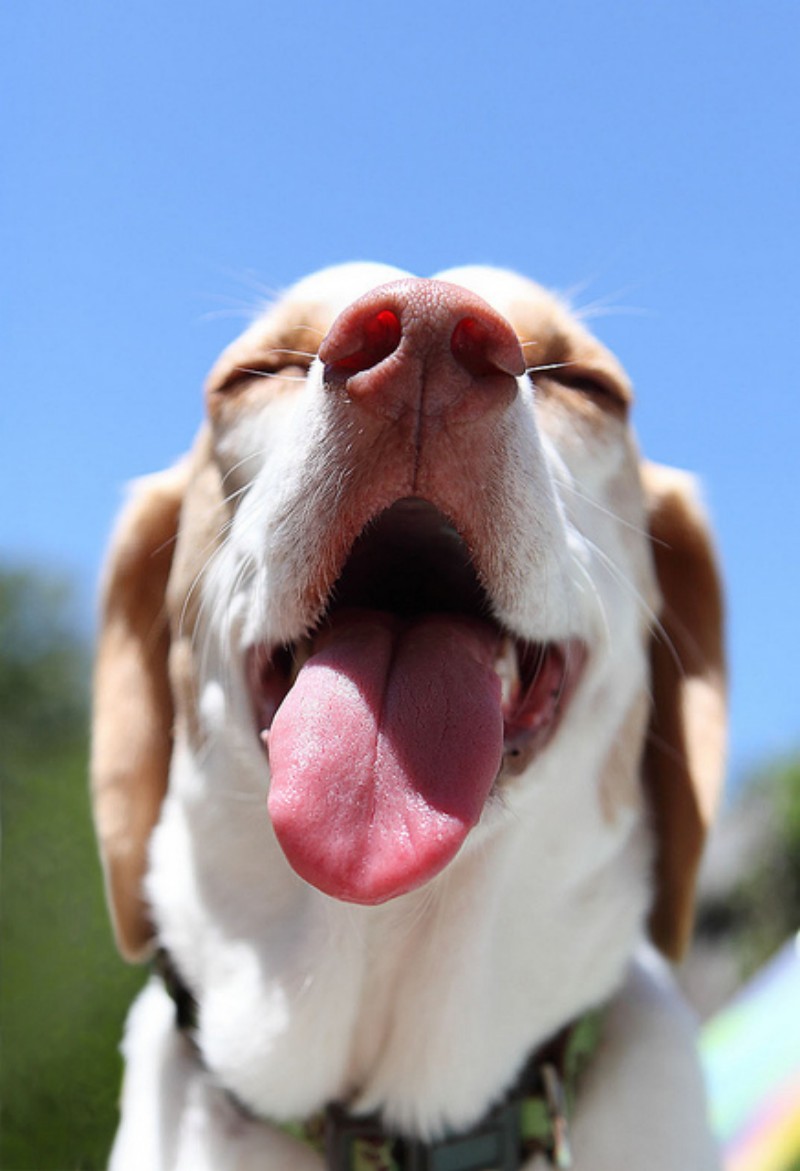
Top Features to Look for in Dog Training Toys
In the vast world of dog training toys, there are several key features that can make a significant difference in both the effectiveness and enjoyment of the training process. Here’s a closer look at what to consider when selecting the perfect training toy for your furry friend:
-
Durability: A training toy should be made from high-quality materials that can withstand the rigors of play. Look for toys constructed with sturdy plastics, heavy-duty metals, or reinforced rubber that can stand up to chewing and tugging.
-
Interactive Elements: Toys that offer interactive play can greatly enhance your dog’s mental stimulation. Features like puzzle pieces that need to be clicked together, treat dispensers, or removable parts can help engage your dog’s brain while they work on their training tasks.
-
Size Matters: The size of the toy should match your dog’s breed and size. A toy that’s too small can be easily destroyed, while one that’s too large might be ignored. Ensure the toy is proportional to your dog’s mouth size to prevent them from swallowing parts that could pose a choking hazard.
-
Easy to Clean: Dogs can get their toys dirty, and it’s crucial to maintain hygiene. Look for toys that are easy to clean, whether it’s a simple wipe-down or a toy that can be safely washed in the dishwasher or with mild soap.
-
Noise-Enhancing Features: Many dogs are stimulated by sound. Toys with squeakers or bells can help catch your dog’s attention and make training exercises more dynamic. However, ensure the noise level is not too overwhelming for your pet.
-
Tug-Resistant Straps: If your dog is a strong chewer, especially when on a leash, a toy with a tug-resistant strap is a must. These straps are designed to withstand pulling and help prevent your dog from escaping or damaging the toy.
-
Treat Compatibility: For dogs that respond well to food incentives, toys that can hold treats or come with treat compartments are ideal. These can be used as part of positive reinforcement training, encouraging good behavior with a tasty reward.
-
Multi-Use Design: Some training toys are versatile, offering multiple functions that cater to different training stages. A toy that can be a tug toy, a puzzle, and a treat holder can save space and provide variety in your dog’s training routine.
-
Safety Standards: Always check that the toy meets safety standards and is free from harmful chemicals. Non-toxic materials are essential, especially if the toy is ingested or comes into contact with your dog’s mouth.
-
Comfortable for Hands: If the toy is meant for interactive play, it should be comfortable for both you and your dog to hold. Toys with a good grip and ergonomic design can make the training process more enjoyable for both parties.
-
Customizability: Some training toys come with removable or adjustable parts, which can be a great feature if you plan to change up the training exercises or if you have multiple dogs of different sizes.
-
Reflective or Glow-in-the-Dark Elements: For training at night or in low-light conditions, consider toys with reflective strips or glow-in-the-dark features. These can help keep your dog visible and prevent confusion during evening training sessions.
By keeping these features in mind when shopping for dog training toys, you’ll be able to select the perfect tool to help your pooch learn new commands, reinforce good behavior, and have fun in the process. Remember, the right toy can make all the difference in your dog’s training journey.

Interactive Play: A Fun Way to Teach Your Dog New Tricks
Interactive play is a delightful and effective method to teach your dog new tricks. It combines fun with learning, making the training process both enjoyable and memorable for your furry friend. Here are some key aspects of interactive play that can enhance your dog’s training experience:
Diverse Toys for Different SkillsTo create an engaging interactive play session, it’s important to have a variety of toys at hand. Puzzle toys challenge your dog’s problem-solving skills, while treat-dispensing toys encourage patience and persistence. Consider toys like treat balls, interactive feeders, and puzzle mats that offer a range of difficulties to keep your dog’s mind actively engaged.
Consistency in CommandsDuring interactive play, it’s crucial to use consistent commands. Whether you’re teaching your dog to fetch a ball or to perform a specific trick, clear and consistent cues will help your dog understand what is expected of them. Repetition is key, as it reinforces the command and helps your dog associate the action with the command.
Incorporating Games into Daily RoutineInteractive play doesn’t have to be a one-time event; it can be woven into your dog’s daily routine. Use these play sessions as an opportunity to practice commands and tricks that you’ve been working on. This approach ensures that your dog is regularly exposed to the training and reinforces the learning process.
Varying the Difficulty LevelAs your dog becomes more proficient in certain tricks or commands, gradually increase the difficulty level of the interactive play. This can be as simple as adding more obstacles for your dog to navigate or introducing more complex puzzles. The key is to keep your dog challenged but not overwhelmed, ensuring that the play remains a positive experience.
Positive ReinforcementThe use of positive reinforcement is essential during interactive play. Reward your dog with treats, praise, or affection whenever they successfully complete a task or trick. This reinforces the desired behavior and encourages your dog to continue learning. Remember, the more positive the experience, the more likely your dog will look forward to future training sessions.
Patience and UnderstandingTraining through interactive play requires patience and understanding. Your dog may not immediately grasp a new trick or may become frustrated. It’s important to remain calm and patient, allowing your dog to learn at their own pace. Understanding your dog’s body language and mood can also help you adjust the play session to better suit their needs.
Incorporating SocializationInteractive play can also be a great way to socialize your dog. Invite friends or other dogs to join in on the fun, allowing your dog to practice new tricks in a variety of social settings. This not only enhances their training but also helps them become more comfortable in different environments.
Creating a Bond Through PlayInteractive play is not just about teaching your dog new tricks; it’s about building a stronger bond between you and your pet. The time spent together during these sessions can be incredibly rewarding, as it deepens your understanding of each other. Your dog will likely look forward to these moments, as they provide a sense of companionship and connection.
Adapting to Your Dog’s PreferencesEach dog has their own preferences and energy levels. Some may enjoy a more active form of interactive play, such as fetch, while others might prefer a quieter, more contemplative puzzle-solving game. Pay attention to what your dog seems to enjoy most and adapt the play sessions accordingly.
In conclusion, interactive play is a powerful tool for teaching your dog new tricks. By incorporating a variety of toys, maintaining consistency in commands, and using positive reinforcement, you can create a fun and effective training environment. Remember to be patient, understand your dog’s preferences, and enjoy the process of learning together. Through interactive play, you’ll not only teach your dog new skills but also foster a deeper, more rewarding relationship.
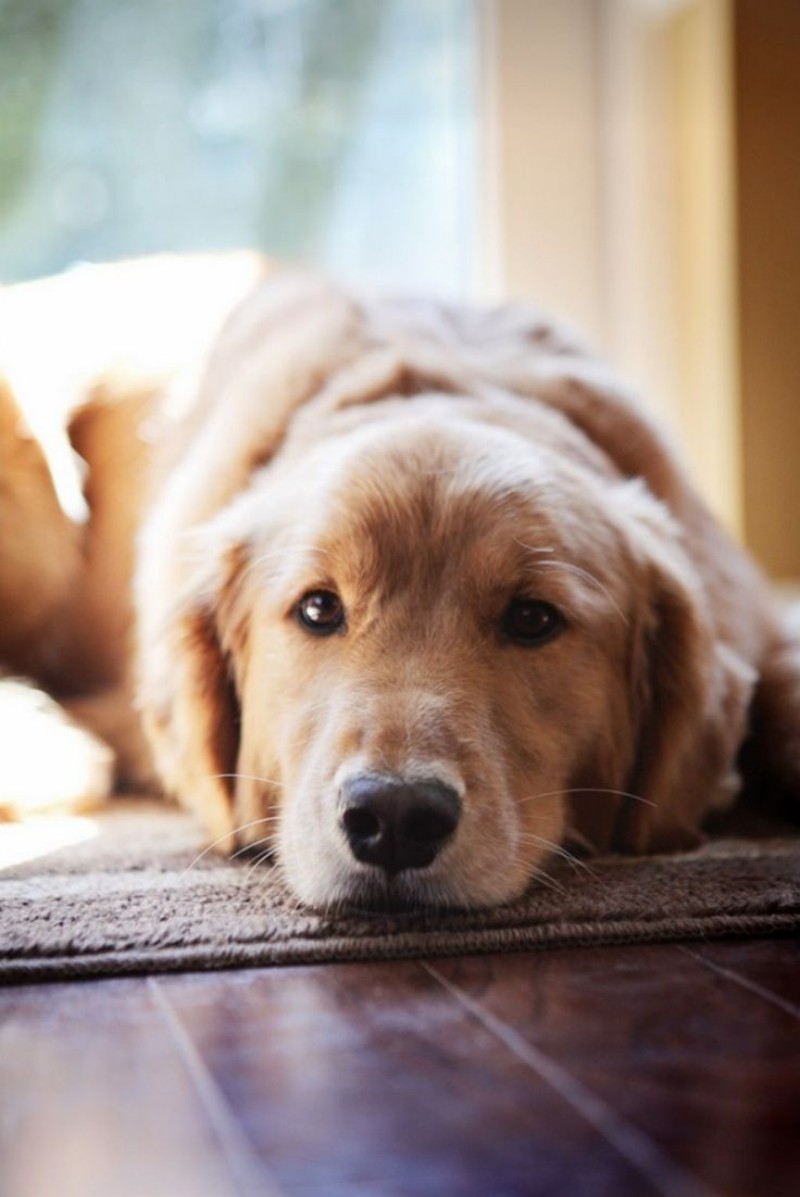
Choosing the Right Size and Material for Your Pet
Understanding the dimensions of your pet is crucial for selecting the perfect size toy. A toy that’s too small can be a choking hazard, while one that’s too large may not hold your dog’s interest. Measure the length, width, and height of your dog to ensure a snug fit for any treat-dispensing toys or puzzle games. Remember, the width of the toy should match the width of your dog’s mouth for a secure grip, and the height should be no more than half the length of your pet’s nose to prevent overexertion.
Consider your dog’s chewing habits when choosing materials. Some dogs are gentle nibblers, while others are notorious for their powerful jaws. Soft, plush toys are great for less aggressive chewers, offering comfort without posing a risk of damaging your furniture or personal items. On the other hand, dogs with a more vigorous chewing style might enjoy toys made from sturdy materials like durable nylon or hard rubber, which can withstand a good deal of abuse.
For dogs that love to play fetch, the choice of material can be a bit more versatile. Durable canvas or even recycled plastic balls can stand up to hours of playtime. However, for a dog with a penchant for destructive chewing, it’s wise to opt for a toy that is specifically designed for heavy-duty play, such as a KONG toy filled with treats, which can be a great way to satisfy both your dog’s physical and mental needs.
Durability isn’t the only factor to consider. The texture of the toy can also impact your dog’s experience. Toys with varied textures, like a plush toy with a squeaker inside and a rubber handle, can stimulate different senses and make playtime more engaging. If your dog has sensory sensitivities, look for toys with adjustable features, like a toy with removable squeakers or different levels of firmness.
Size also plays a role in how much noise a toy will make. A large, hollow ball will create more noise as it rolls and bounces, which might be thrilling for some dogs. However, for others, a quiet, soft toy might be more calming and enjoyable. It’s important to match the noise level of the toy to your dog’s personality and sensitivity to sound.
Some dogs are more attracted to toys that have a scent, especially those with a smell reminiscent of their favorite human. Toys with a deodorized scent of your pet’s own fur or favorite food can help create a stronger connection and make playtime feel more personal. It’s also worth noting that dogs with allergies or sensitivities to certain materials may prefer toys made from hypoallergenic materials.
When introducing a new toy, always supervise your pet during the first use, especially if the toy is a new material or texture for them. This allows you to monitor for any adverse reactions, such as an allergy to the toy’s material or discomfort due to the toy’s size or shape.
The age of your dog is another important consideration. Puppies and senior dogs often require different types of toys. Puppies tend to be more destructive due to their developing teeth, so you’ll want to provide toys that can stand up to their chewing. As dogs age, they might appreciate toys that are easier to grasp or toys that can help with joint mobility and dental care.
Lastly, it’s important to have a variety of toys to keep your dog’s playtime fresh and interesting. Rotating toys can prevent boredom and keep your dog engaged in their play, ensuring they continue to learn and develop new skills through play. Remember, the right toy not only keeps your pet entertained but also helps with their physical and mental well-being, contributing to a healthier and happier relationship between you and your four-legged friend.
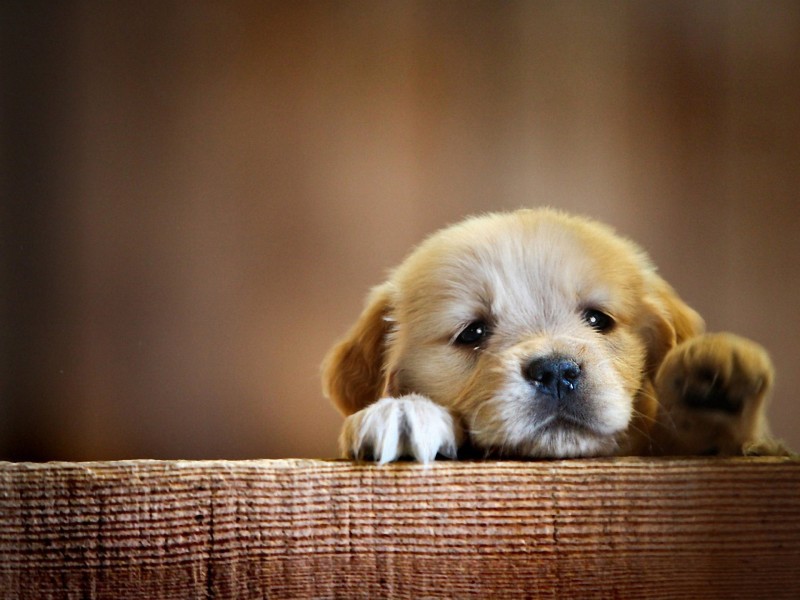
How to Integrate Training Toys into Your Dog’s Daily Routine
Understanding the importance of consistency and engagement, incorporating training toys into your dog’s daily routine can be a seamless and enjoyable process. Here are some ways to weave these fun tools into your furry friend’s everyday activities:
1. Early Mornings: Wake-Up with a PuzzleStarting the day with a puzzle toy can stimulate your dog’s mind and provide a gentle wake-up call. You can place a treat-filled puzzle toy next to your dog’s bowl or in their bed, encouraging them to work for their breakfast. This not only keeps them occupied but also gets their day off to a brain-boosting start.
2. Midday Mental StimulationMidday is a great time to introduce a new challenge. A hide-and-seek game using scent toys can be a fantastic way to engage your dog’s nose. Hide small toys or treats around the house, and let your dog use their sense of smell to find them. This not only exercises their brain but also gives them a physical workout.
3. Afternoon RelaxationAfter a busy day, your dog might appreciate some quiet time. A calming toy, such as a plush chew or a stress-relieving ball, can be a great addition to their afternoon routine. These toys provide comfort and can be used to soothe your dog during quieter moments.
4. Evening PlaydatesInteractive play sessions can be a fantastic way to bond with your dog in the evening. You can use a tug toy for a game of tug-of-war or a frisbee for a fun throwing session. These activities not only provide exercise but also strengthen the human-pet bond.
5. Incorporating Training Toys into WalksDuring walks, you can use training toys to reinforce good behavior or to keep your dog engaged. For instance, a treat-dispensing toy can be used to keep your dog focused on you instead of other distractions. This type of toy can also serve as a motivator for staying on-leash or performing commands.
6. Use Toys for Potty TrainingToys can also be a helpful tool during potty training. For example, you might use a special “potty” toy that your dog is allowed to play with only when it’s time to go outside. This can create a positive association with the bathroom area.
7. Include Toys in Your Dog’s Bedtime RoutineA bedtime routine that includes a calming toy can help your dog relax before sleep. A plush toy or a sound machine with a calming tone can create a sense of security and comfort, making it easier for your dog to settle down for the night.
8. Rotate Toys to Keep Things FreshDogs can quickly grow bored with the same toys. Regularly rotating your dog’s toys can help keep them interested and challenged. Introduce new toys or different versions of their favorite ones to keep the excitement alive.
9. Engage Your Dog with Toys When You’re BusyIf you’re preoccupied with work or household chores, a toy can be a great way to keep your dog occupied. A durable chew toy or a ball launcher can provide entertainment for your dog while you’re busy elsewhere in the house.
10. Teach New Tricks with ToysUse toys as rewards for teaching new tricks. For example, you can use a tug toy as a motivator for learning a new command. The sight of the toy can serve as a trigger for your dog to engage in learning.
Incorporating training toys into your dog’s daily routine can be a game-changer for their mental and physical health. By providing a variety of activities that stimulate their mind and body, you’re not only keeping your dog entertained but also ensuring they lead a well-rounded life. Remember to always supervise playtime and choose toys that are appropriate for your dog’s size, chewing habits, and play style.
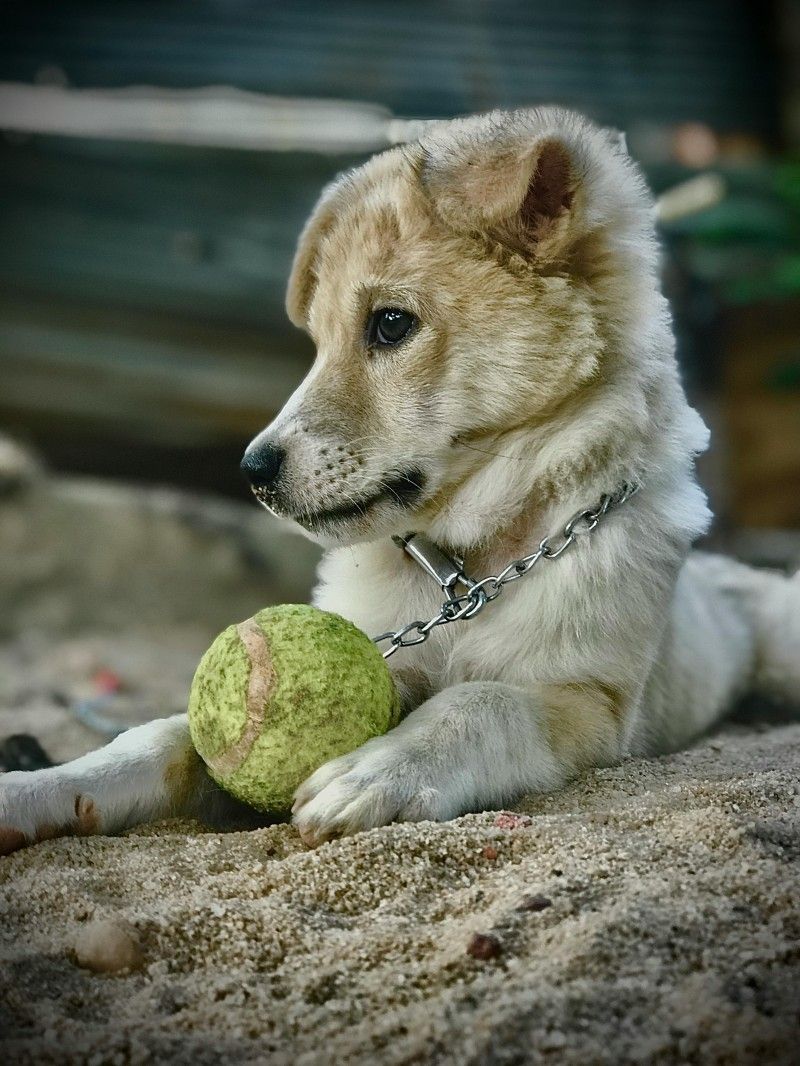
Real-Life Success Stories: Transforming Your Dog with Training Toys
In the world of dog training, there are countless success stories where ordinary pets have been transformed into well-behaved companions, all thanks to the right training toys. Here are a few heartwarming tales that showcase the incredible impact of these playful tools:
A young golden retriever named Max had always been a bit of a handful. His energy was boundless, and he often found himself getting into trouble around the house. It wasn’t until his owner, Sarah, introduced him to a puzzle toy that Max’s behavior began to change. The interactive nature of the toy kept Max’s mind engaged, and as he worked to solve the puzzles, he learned patience and focus. Slowly but surely, Max’s destructive tendencies diminished, and he became a calmer, more contented dog.
Another story involves Luna, a beagle with a penchant for digging. Her owner, Mark, was at his wit’s end, as the backyard was a war zone. He decided to try a digging toy, which encouraged Luna to bury her treats in a designated area rather than the garden. The toy not only curbed her digging habit but also provided her with a constructive outlet for her natural instincts.
For many dogs, the introduction of a treat-dispensing toy was a game-changer. Charlie, a Jack Russell terrier, was known for his separation anxiety. His owner, Emily, found that by hiding treats in the toy and leaving it with Charlie when she left the house, the dog’s anxiety levels decreased significantly. The toy became a calming presence, offering a sense of security and keeping Charlie occupied.
One of the most remarkable transformations came with Bella, a labrador who was a bit of a jumpy dog. Her owner, Tom, had tried various training methods with little success. It wasn’t until he introduced a toy that made a soothing sound that Bella’s behavior improved. The toy’s calming vibrations helped Bella to stay calm and composed, especially in noisy or stressful situations.
In another case, a shy and reserved Shih Tzu named Daisy found her voice through a talking toy. Her owner, Lisa, had been trying to help Daisy become more sociable, but the dog was hesitant to interact with others. When Daisy discovered the toy that would bark and whine at the press of a button, she became more curious and willing to engage with the world around her. The toy was a bridge to new friendships and a newfound confidence in Daisy.
These stories are just a few examples of how training toys can transform a dog’s behavior and personality. They provide mental stimulation, help with problem-solving skills, and can even improve a dog’s mood. Here’s a closer look at the specific ways these toys can make a difference:
Mental Stimulation: Training toys are designed to challenge a dog’s mind, which is crucial for preventing boredom and destructive behavior. By keeping the brain active, these toys can also reduce anxiety and stress, leading to a happier and healthier dog.
Problem-Solving Skills: Many training toys require dogs to think and figure things out. This can range from simple puzzles that require a treat to be released to more complex toys that mimic natural hunting behavior. These challenges can help improve a dog’s problem-solving abilities and cognitive function.
Socialization: Some toys are designed to encourage social interaction. For dogs that are shy or anxious, these toys can serve as a stepping stone to building confidence and forming bonds with other dogs and people.
Emotional Well-being: The emotional benefits of training toys are significant. They can provide comfort, reduce anxiety, and even help dogs to relax. This is especially true for dogs that suffer from separation anxiety or have a hard time adjusting to new environments.
Physical Exercise: While training toys are primarily mental exercises, many also encourage physical activity. Dogs that are engaged in play with these toys often end up burning off excess energy, which can lead to a healthier weight and improved overall fitness.
In conclusion, the success stories of dogs transformed by training toys are a testament to the power of play and interaction. These toys can be a game-changer for dogs of all breeds, ages, and temperaments, offering a fun and effective way to improve behavior, enhance cognitive abilities, and foster emotional well-being. Whether it’s a puzzle toy, a treat-dispensing ball, or a toy that makes a calming sound, the right training toy can make all the difference in a dog’s life.
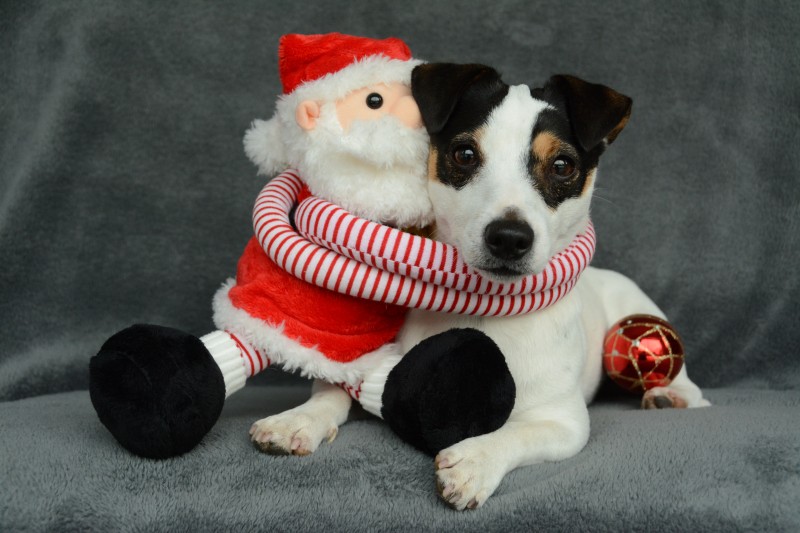
Sustainable Options: Eco-Friendly Dog Training Toys
Understanding the importance of sustainability in pet toys, eco-friendly dog training toys not only provide a safe play experience but also contribute to a greener planet. Here’s a closer look at why these toys are a responsible choice for both you and your furry friend.
Nature’s TouchMany eco-friendly dog training toys are crafted from natural materials like rubber, wood, or cotton. These materials are not only biodegradable but also often come from renewable sources, ensuring that your pet’s playthings are kind to the environment. For instance, rubber made from the Hevea tree is a sustainable alternative to synthetic rubber, and wood toys can be sourced from responsibly managed forests.
Non-Toxic IngredientsOne of the primary concerns for pet owners is the safety of the toys their pets play with. Eco-friendly training toys are free from harmful chemicals, such as BPA, phthalates, and lead. This means that while your dog chews and tugs at these toys, they are not exposed to potentially toxic substances that could lead to health issues.
Longevity and DurabilityEco-friendly toys are designed to last. With sturdy construction and high-quality materials, these toys can withstand the rigors of play, reducing the need for frequent replacements. This not only saves money in the long run but also reduces the amount of waste that ends up in landfills.
Engaging and StimulatingDespite their eco-friendly nature, these toys are still highly engaging and stimulating for dogs. From interactive puzzles that challenge their problem-solving skills to natural rubber balls that encourage fetch, these toys are designed to keep your dog entertained and mentally sharp.
Variety of ChoicesThe market for eco-friendly dog training toys has expanded, offering a wide variety of options to suit different breeds, sizes, and play styles. You can find everything from chew toys made from recycled materials to plush toys filled with natural herbs that promote relaxation.
Supporting Responsible PracticesBy choosing eco-friendly dog training toys, you’re not just making a choice for your pet; you’re also supporting companies that prioritize responsible business practices. This can include fair labor, ethical sourcing, and a commitment to reducing their carbon footprint.
Community ImpactThe choice to buy eco-friendly toys can also have a positive impact on local communities. Many eco-friendly toy manufacturers work with artisans and small-scale producers, creating jobs and supporting local economies.
Educational OpportunitiesUsing eco-friendly toys can be a learning experience for your dog as well. They can learn to appreciate different textures and natural scents, which can be particularly beneficial for dogs with sensory sensitivities or those that are recovering from illness.
Customization and PersonalizationEco-friendly toys often come with customization options, allowing you to choose colors, scents, and even shapes that cater to your dog’s preferences. This personal touch can make the toy more appealing to your pet and can enhance the training experience.
In conclusion, eco-friendly dog training toys are a smart and sustainable choice for pet owners who want to provide their dogs with safe, engaging playthings while also doing their part for the environment. From the materials used to the manufacturing process, these toys are designed with the planet in mind, offering a win-win for both your pet and the Earth.
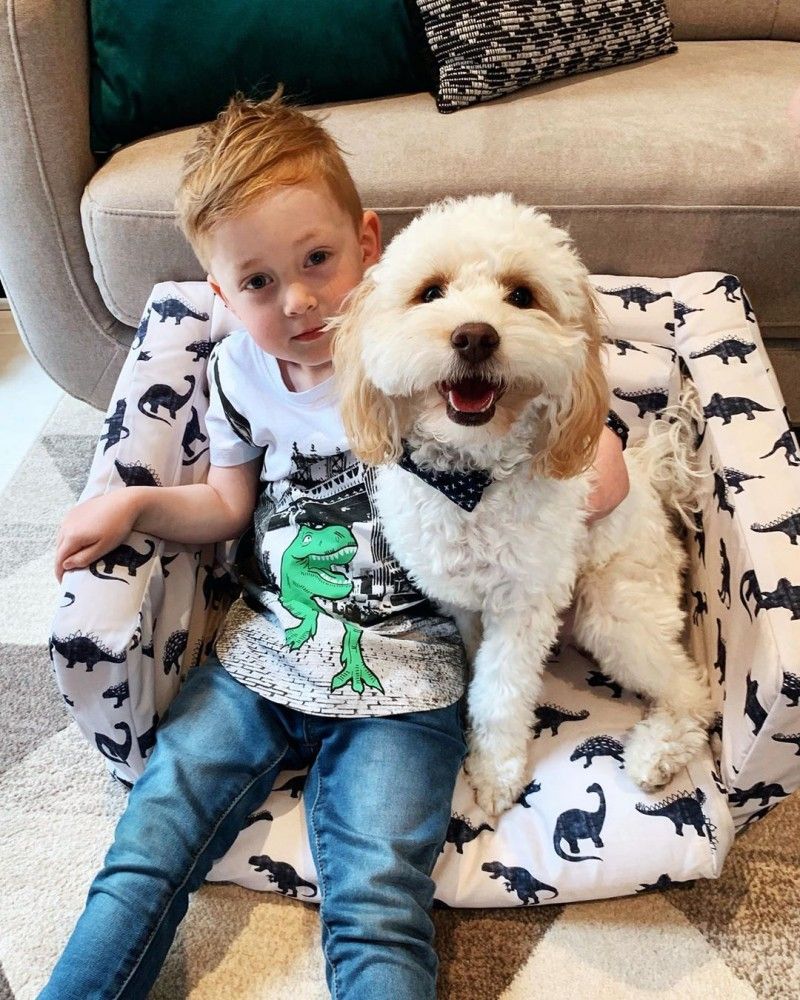
Innovative Designs: Keeping Up with Your Dog’s Curiosity
Dog toys are not just about providing entertainment; they are also tools that can enhance your dog’s development and keep their minds sharp. Innovative designs in dog training toys can be the key to nurturing your furry friend’s curiosity and ensuring they stay engaged. Here’s how these unique toys can keep up with your dog’s insatiable curiosity:
-
Interactive puzzles that challenge problem-solving skills are a game-changer. Dogs naturally love to figure things out, and these toys encourage them to use their noggin. Think of toys that hide treats or require them to manipulate a series of pieces to release a reward.
-
Squeaky and crinkly toys that mimic the sounds and textures of real prey can stimulate your dog’s predatory instincts. These toys often come in various shapes and sizes, making them appealing to dogs of all breeds and energy levels.
-
Durable rubber or plastic toys with hidden compartments are perfect for keeping your dog’s focus. They can spend hours trying to find the hidden treats or toys inside, providing mental stimulation and a great way to distract them from unwanted behaviors.
-
Smart toys that connect to your smartphone can provide endless entertainment and training opportunities. These gadgets often come with games, treats, and even virtual training sessions, ensuring your dog is entertained and educated simultaneously.
-
Noisy toys that can be filled with water or sand add an extra layer of fun. The sound and movement of these toys can capture your dog’s attention and keep them occupied for extended periods, especially during quiet times.
-
Soft plush toys that are weighted or filled with beads can be used for comfort and play. Some of these toys even come with removable parts or interactive features like flaps to pull or buttons to press, adding an element of surprise and engagement.
-
Reflective toys or those with LED lights can be both decorative and functional. They can be used during playtime to catch your dog’s eye in low-light conditions, or even serve as a calming tool for dogs that get anxious in the dark.
-
Toys designed for tug-of-war can be a great way to build your bond with your dog while keeping them engaged. Look for sturdy materials that can withstand the strength of a determined pup and encourage a healthy form of exercise.
-
Training toys that are also treat-dispensing can help with teaching commands and reinforcing good behavior. These toys can release treats when your dog performs a specific action, making training sessions more enjoyable for both you and your dog.
-
Puzzle toys that adapt to your dog’s progress are a smart choice. Some can start easy and gradually become more challenging as your dog’s skills improve, ensuring that the toy remains interesting and effective over time.
Innovative designs in dog training toys are all about adapting to your dog’s changing interests and abilities. They encourage natural behaviors like foraging, hunting, and socializing, which are crucial for a dog’s overall well-being. By choosing toys that challenge your dog’s curiosity, you’re not only providing entertainment but also investing in their cognitive and physical health. So, the next time you’re looking for a new toy for your furry friend, think beyond the traditional fetch stick and consider how an innovative design can ignite your dog’s curiosity and keep them happy and healthy.
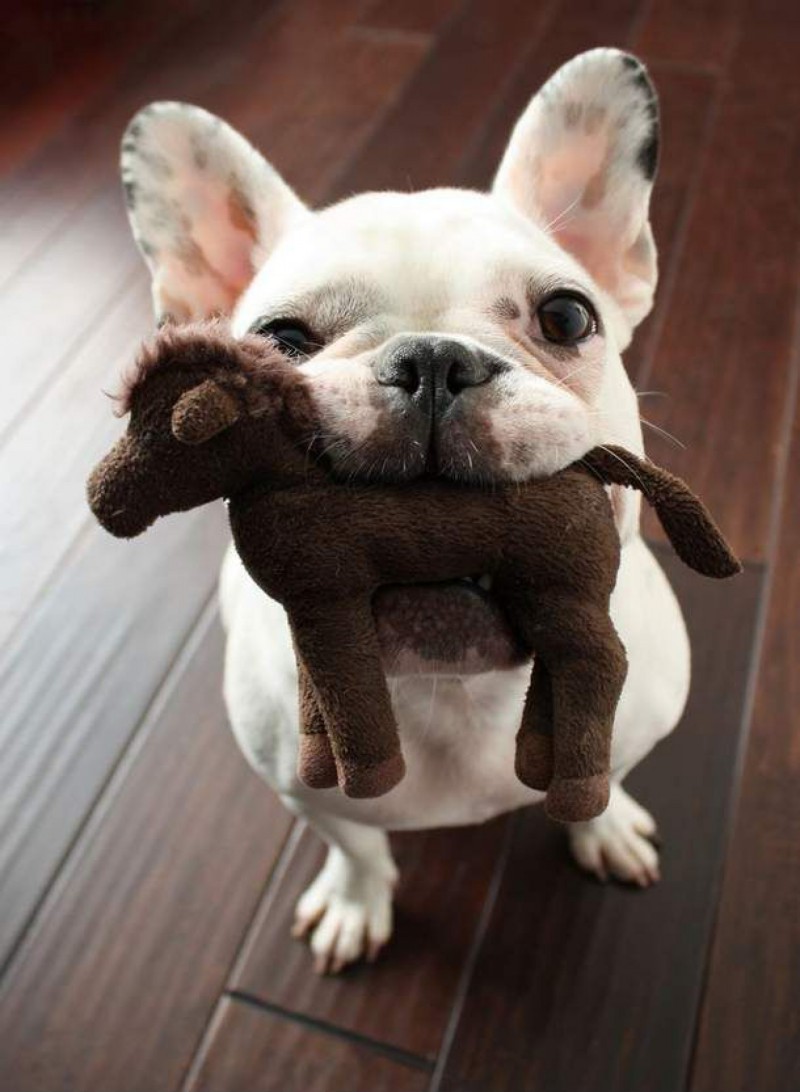
Where to Find the Best Dog Training Toys Online
Navigating the online marketplace for dog training toys can be a daunting task, but with a few tips and tricks, you can find the best options to suit your furry friend’s needs. Here’s a guide to help you explore the vast array of online stores and platforms:
-
Research Reputable Online Retailers: Start by looking for established online retailers that specialize in pet supplies. Websites like Amazon, Chewy, and Petco often have a wide selection and customer reviews that can give you insight into the quality and durability of the toys.
-
Utilize Search Filters: Most online stores offer search filters that allow you to narrow down your options based on size, material, and type of toy. Use these filters to find toys that are suitable for your dog’s breed, age, and play style.
-
Check for Customer Reviews and Ratings: Before making a purchase, read through customer reviews and ratings. Look for comments on the toy’s effectiveness in training, how long it lasted, and whether it was safe for your dog to play with.
-
Compare Prices: Don’t just settle for the first option you find. Shop around and compare prices from different retailers. Sometimes, you can find the same toy at a lower price on a different website or with a discount code.
-
Look for Free Shipping or Return Policies: Consider the cost of shipping and the retailer’s return policy. Some online stores offer free shipping on orders over a certain amount, which can save you money. Additionally, a good return policy is important in case the toy doesn’t meet your expectations or your dog doesn’t like it.
-
Check for Authenticity: If you’re buying from a third-party seller on platforms like Amazon, make sure to check that the seller is reputable and authorized to sell the product. Counterfeit items can be a risk to your dog’s safety.
-
Explore Social Media: Many pet brands have social media profiles where they showcase their products and offer exclusive deals. Following these accounts can alert you to new products and promotions.
-
Consider Subscription Services: Some online stores offer subscription services that deliver a selection of toys and treats to your door monthly. This can be a convenient way to try out different types of training toys and keep your dog engaged.
-
Look for Educational Resources: Some online retailers provide educational content that can help you choose the right toy for your dog’s training needs. Blogs, videos, and guides can be invaluable resources.
-
Join Online Pet Forums: Participating in online pet forums can be a great way to get recommendations from fellow dog owners. You can ask for specific toy suggestions and hear about the experiences others have had.
-
Use Price Comparison Tools: Tools like Honey or Rakuten can automatically apply coupons and cashback offers when you shop online, potentially saving you money on your purchases.
-
Keep an Eye Out for Sales and Clearance: Many online stores have clearance sections or seasonal sales where you can find quality toys at discounted prices.
-
Check for Warranty and Support: Some manufacturers offer warranties on their products, and it’s worth checking if the retailer provides customer support in case you have any issues with your purchase.
-
Look for Eco-Friendly Brands: If sustainability is important to you, seek out online retailers that specialize in eco-friendly dog training toys. These brands often use sustainable materials and have a commitment to reducing their environmental impact.
-
Remember to Measure: Before buying a toy, measure your dog to ensure it’s the right size. A toy that’s too small could be a choking hazard, while one that’s too large may not be engaging enough.
By following these steps, you’ll be well-equipped to find the best dog training toys online, ensuring that your furry companion not only stays entertained but also receives a valuable training tool that enhances their behavior and mental stimulation.

